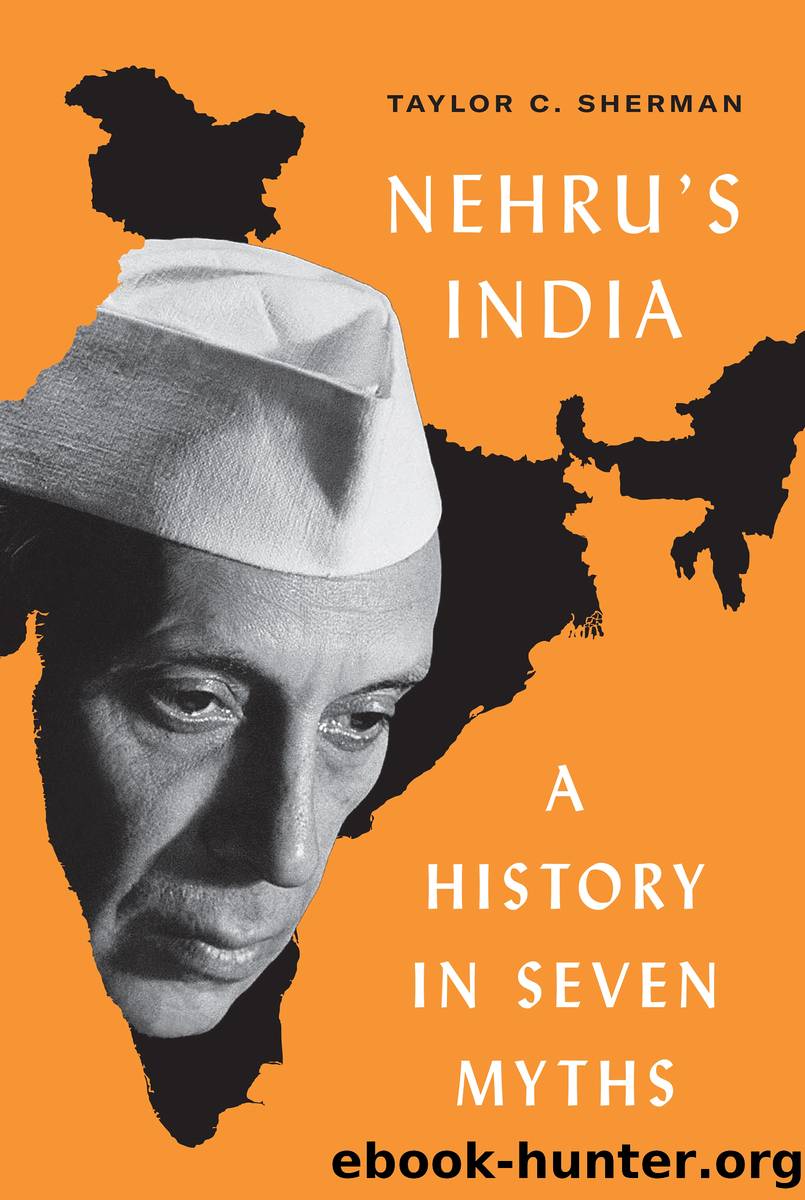Nehru's India by Sherman Taylor C.;

Author:Sherman, Taylor C.;
Language: eng
Format: epub
Publisher: Princeton University Press
Published: 2022-05-30T00:00:00+00:00
Incompetence, Exceptionalism and the Disciplinary State
In spite of their desire to reform the structures they had inherited, there were arenas in which politicians and administrators agreed that the existing administrative machinery, however flawed, had to continue to be used. Many of these fell within the broad range of institutions, laws and regulations aimed at disciplining various segments of the population. Still, the police, courts, jails and low-level bureaucracy required to deal with these problems were recognised as weak and disjointed even as they were put to work at these new tasks.
Let us return briefly to industry, for we do find central initiatives aimed at disciplining private industry. The new Government of India inherited a system of licensing and controls, which had been cobbled together largely during the Second World War. On paper, it looked like state control. Under this regime, however, prices of essential goods were set by boards which were packed with producers, who quickly co-opted the system.77 After the war, there was a widespread sense that, as one MP put it, âindustrialists as a rule mis-behave[, â¦] that they make illegitimate profits [⦠and] that they do not treat the labour fairlyâ.78 As for the planners, they worried that owners funnelled capital out of industry and into moneylending and trade, bleeding enterprises, and damaging the larger project of industrialisation.79 Accordingly, independent Indiaâs politicians and planners wanted to redirect the energies of businessmen into areas that would both assist in the development of the nation and not take advantage of ordinary Indians. They wanted private enterprise, as Gulzarilal Nanda, minister for planning, told the Lok Sabha in 1951, âto become national in spiritâ.80
To this end, the Industrial Development (Regulation) Bill, had been put forward in 1949. Under the initial proposals, the central government would have been able to direct firmsâ investment decisions, and to step in and manage firms or revoke licences when firms acted so as to reduce the value of the venture. However, big business put pressure on their personal contacts in the Government of India to see that the bill was revised, and they undertook an investment strike to underscore their influence in the economy. Their manoeuvres spooked the government and, in the end, the Industrial Development (Regulation) Act of 1951, was gutted of its more ambitious powers. The final version required larger enterprises to acquire an array of permissions, licences and permits, but contained few levers by which the government could actually shape investment decisions.81
Even as they passed the act, many MPs, Congress members no less, expressed doubts about whether âthe stateâ could succeed at the tasks they were assigning it. After all, since the war they had had plenty of experience of controls over essential commodities, and the administration had been found to be âfar from satisfactoryâ.82 Banarsi Prasad Jhunjhunwala, a Congress MP from Bihar, treated his peers in the Lok Sabha to a disquisition on his experience of the bureaucrats overseeing sugar controls in his state and in neighbouring Uttar Pradesh. âThose who
Download
This site does not store any files on its server. We only index and link to content provided by other sites. Please contact the content providers to delete copyright contents if any and email us, we'll remove relevant links or contents immediately.
| Central Asia | Southeast Asia |
| China | Hong Kong |
| India | Japan |
| Korea | Pakistan |
| Philippines | Russia |
The Sympathizer by Viet Thanh Nguyen(4095)
The Rape of Nanking by Iris Chang(4023)
World without end by Ken Follett(3346)
Ants Among Elephants by Sujatha Gidla(3280)
Blood and Sand by Alex Von Tunzelmann(3057)
Japanese Design by Patricia J. Graham(3002)
City of Djinns: a year in Delhi by William Dalrymple(2435)
Foreign Devils on the Silk Road: The Search for the Lost Treasures of Central Asia by Peter Hopkirk(2388)
Inglorious Empire by Shashi Tharoor(2345)
The Queen of Nothing by Holly Black(2319)
In Order to Live: A North Korean Girl's Journey to Freedom by Yeonmi Park(2302)
India's Ancient Past by R.S. Sharma(2298)
Tokyo by Rob Goss(2292)
India's biggest cover-up by Dhar Anuj(2245)
Tokyo Geek's Guide: Manga, Anime, Gaming, Cosplay, Toys, Idols & More - The Ultimate Guide to Japan's Otaku Culture by Simone Gianni(2239)
The Great Game: On Secret Service in High Asia by Peter Hopkirk(2229)
Goodbye Madame Butterfly(2162)
Batik by Rudolf Smend(2008)
Living Silence in Burma by Christina Fink(1977)
